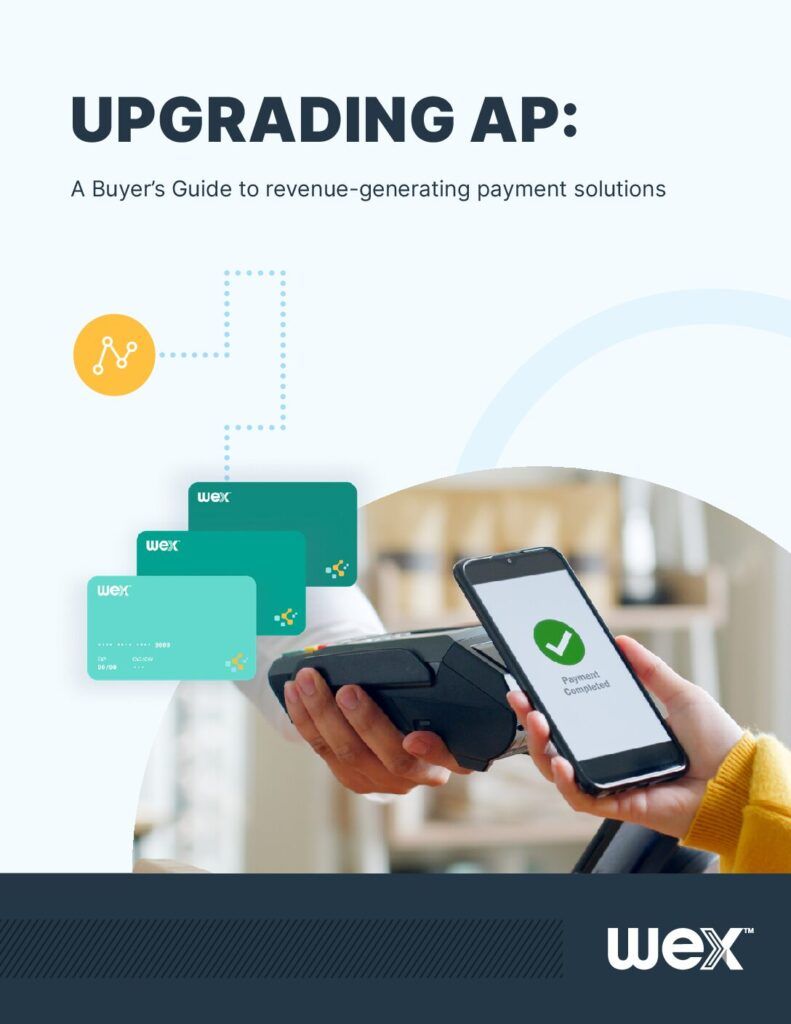Stay connected
Subscribe to our corporate payments blog to stay on top of payment innovations.

In 2025, the role of a financial decision maker is more dynamic than ever. Yes, cost control and risk management are still core responsibilities, but today’s finance leaders are also expected to help drive business growth. One area they’re paying close attention to? Payments.
Payments have traditionally been viewed as a back-office function — necessary, but not strategic. But with new technologies and evolving supplier expectations, payments are becoming a lever for growth. Leaders are realizing that the right approach to paying vendors can actually bring in revenue.
Here’s how that shift is happening, and why payments are becoming a bigger part of the accounts payable strategy.

Download our AP Buyer’s Guide to compare options, see how virtual cards stack up, and find the best fit for your accounts receivable and payable workflow
Historically, accounts payable was all about efficiency. Cut costs. Reduce errors. Pay on time. That’s still important, but many finance teams have already optimized for basic efficiency. The next step is turning payments into a value driver.
Take virtual cards, for example. A virtual card is a unique 16-digit number that is generated for each transaction or purchase, replacing a physical card. This single-use or limited-use number is tied to a specific purchase, reducing fraud risk and simplifying transaction tracking.
They not only help companies pay vendors faster and more securely, but they also come with rebates — incentives offered by issuers (such as WEX® or a credit card company), providing cash back or discounts exclusively for virtual card payments. Those rebates can add up to real revenue.
It’s a model CFOs are increasingly leaning into. According to PYMNTS, 56% of CFOs say virtual cards play a key role in maintaining financial flexibility.
But financial flexibility doesn’t just mean speed and control for buyers. It’s also about a smarter, more balanced approach to supplier relationships. In a recent PYMNTS interview, Eric Frankovic, President of WEX Corporate Payments, explained “It’s no longer a buyer-only world. We have to tune what we do to make sure that we’re balancing the value between buyers and suppliers so both sides are benefiting.”
Subscribe to get the latest on business payments.
Rethinking payments is an opportunity to strengthen supplier relationships. In a tight supply chain environment, vendor loyalty matters. Offering suppliers faster, more predictable payments through virtual cards or other digital methods can give your business a competitive edge.
It’s a win-win. Suppliers get paid quicker and with better visibility. Your business gains goodwill, potential early payment discounts, and, depending on your payment program, additional rebates. Financial decision makers see this not just as smart finance, but as smart business.
This shift is especially relevant in industries with complex supplier networks, like construction, healthcare, or manufacturing. When supplier partnerships are strong, your operations are more resilient. And in competitive industries, resilience is growth.
Let’s not forget the compliance side. As financial regulations evolve and fraud becomes more sophisticated, companies need better tools to stay protected. Modern payment platforms can offer clearer audit trails and tighter controls than traditional methods like checks or ACH transfers.
For leaders, that means less time spent chasing down payment errors and more confidence in internal processes. It also frees up the finance team to focus on more strategic work.
Cleaner, more secure payments don’t just prevent losses. They build trust with auditors, board members, and the broader organization.
One of the hidden challenges in many finance departments is fragmented data. When payments are spread across different systems, it’s hard to get a clear picture of spending. That makes it harder to plan investments, manage working capital, or respond quickly to market changes.
Modern payment solutions bring more of this activity into one place. That means more real-time visibility, which leads to faster and more informed decisions.
Better visibility also helps financial leaders align with other departments. When finance has a clearer view of vendor payments, it can collaborate more effectively with procurement, operations, or IT. And alignment across teams is another factor in driving sustainable growth.
What we’re seeing in 2025 is a broader rethinking of what payments can do for a business. It’s not just about processing invoices anymore. It’s about using payments as a tool rather than a byproduct of doing business.
Of course, this shift doesn’t happen overnight. But those who are making the leap are seeing results, not just in the finance department, but across the business.
Explore how WEX solutions can help you gain efficiencies, cut costs, and generate revenue.
Contact us to get started
For more insights and updates on corporate payments, check out:
Stay up to date on the latest in business payments by subscribing to our blog! Simply hit the “Subscribe” button above or submit your email address in the form below.
The information in this blog post is for educational purposes only. It is not legal, tax or investment advice. For legal, tax or investment advice, you should consult your own legal counsel, tax, and investment advisers.
Subscribe to our corporate payments blog to stay on top of payment innovations.